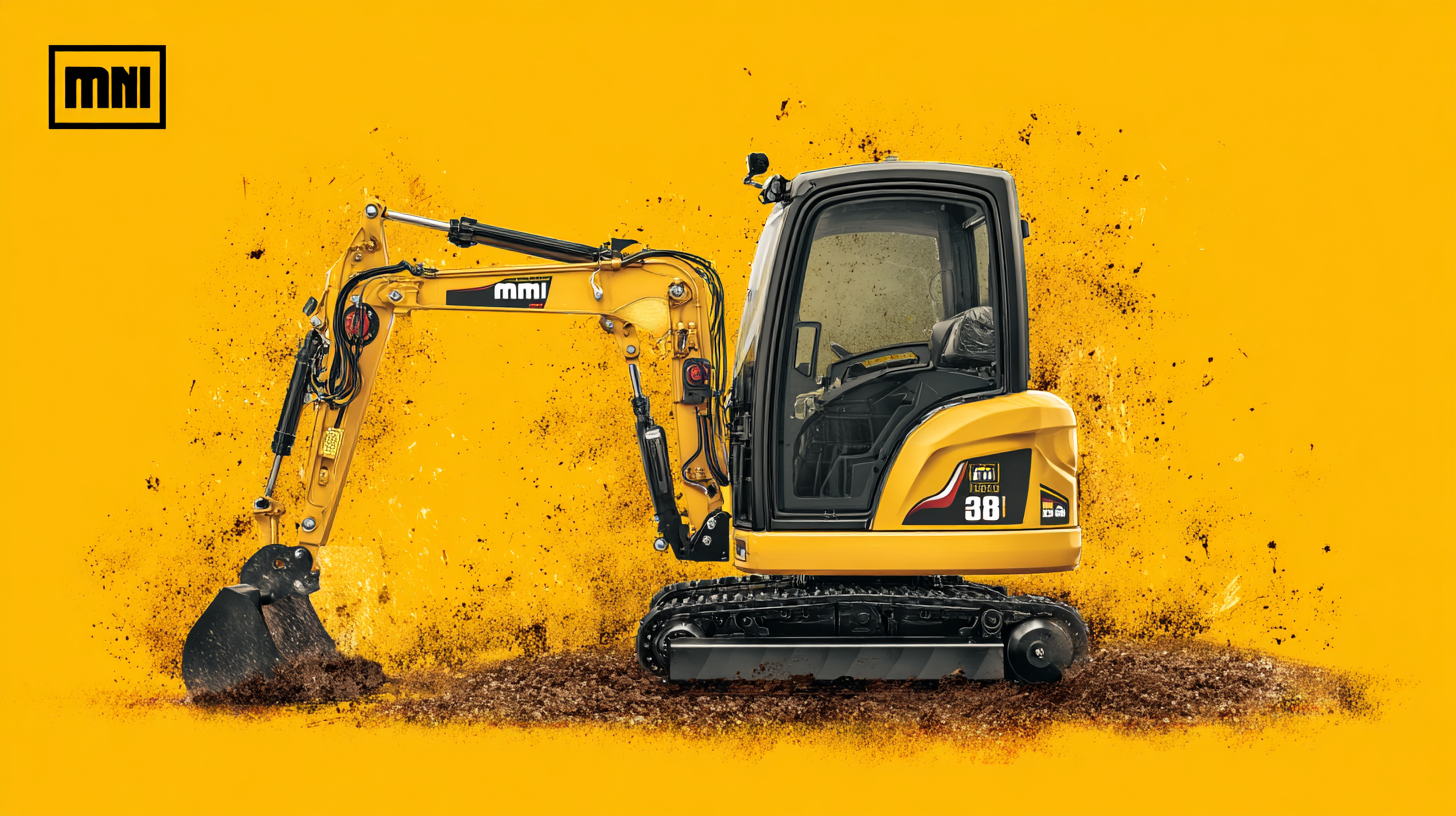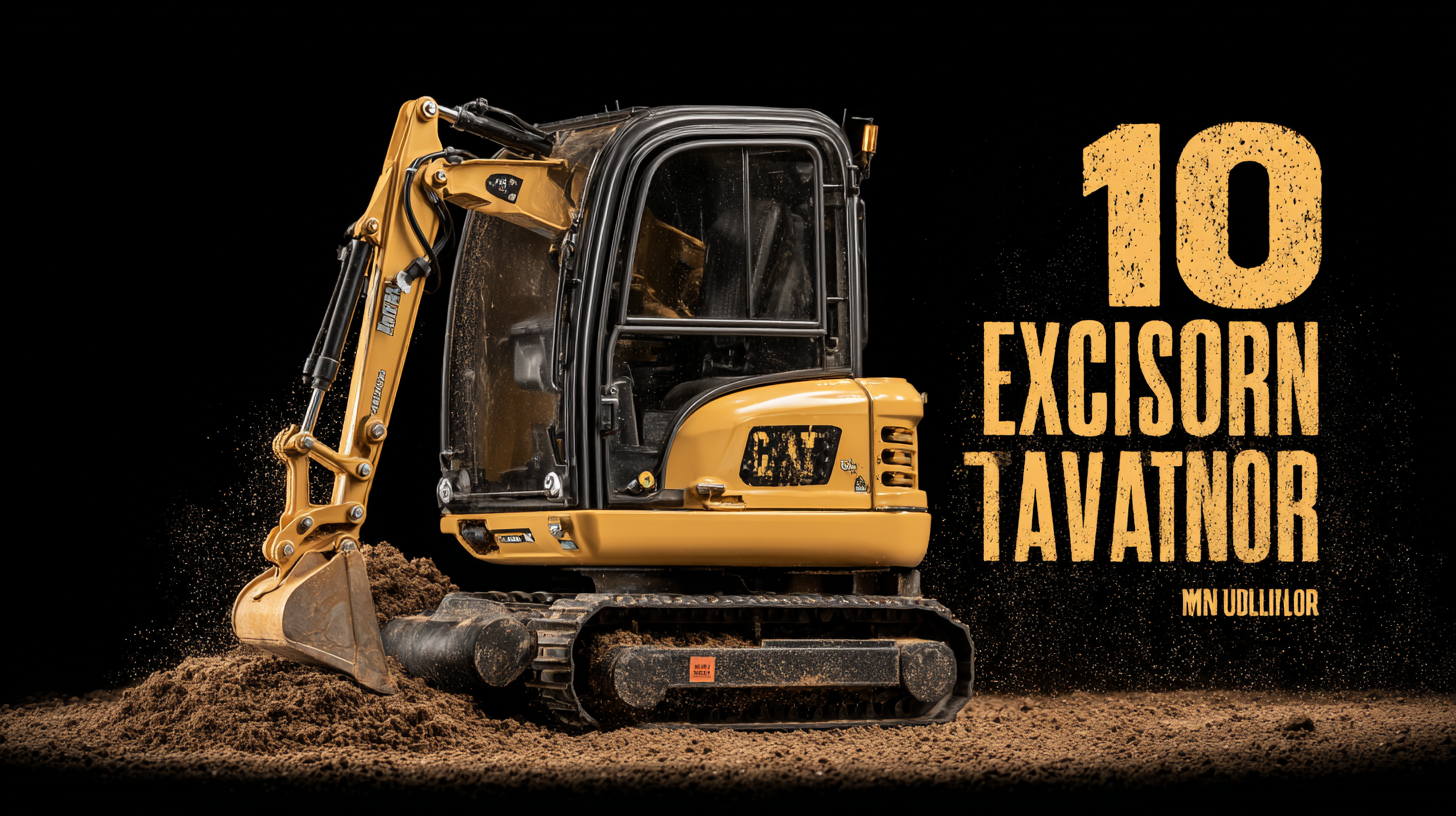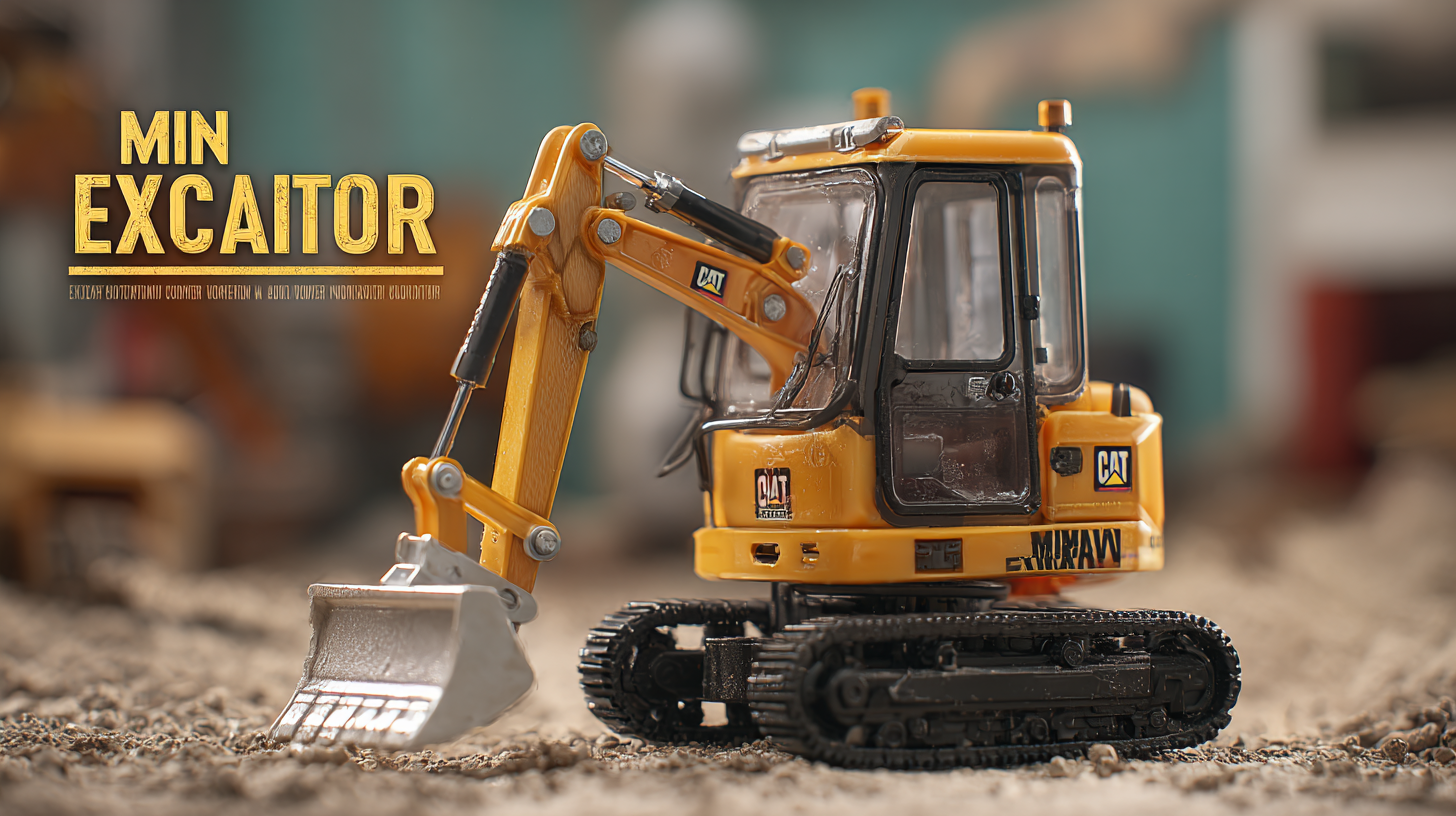Leave Your Message
- Phone
- E-mail
- Whatsapp
In the ever-evolving landscape of construction equipment, the Mini Excavator has emerged as a pivotal tool for efficiency and versatility. According to a recent report by Grand View Research, the global mini excavator market size was valued at approximately $3.5 billion in 2020, highlighting a robust demand fueled by urbanization and infrastructure development. Designed for tight spaces and intricate tasks, these compact machines offer capabilities that rival their larger counterparts, making them a favorite among contractors.

The benefits of utilizing a Mini Excavator are profound, including improved maneuverability, lower operating costs, and enhanced productivity, which collectively streamline operations across various construction projects. In this blog, we will delve into the top 10 reasons why investing in the best Mini Excavator is the ultimate solution for your construction needs.
In modern construction, the ability to operate efficiently in restricted areas is paramount, and this is where mini excavators excel. According to a report by the Equipment Dealers Association, approximately 70% of construction projects today involve working in tight spaces that traditional machinery cannot effectively navigate. Mini excavators, with their compact design and small footprint, provide enhanced maneuverability, allowing operators to access challenging areas without compromising on performance.
The versatility of mini excavators makes them invaluable on construction sites. For instance, they are capable of fitting through standard doorways and navigating narrow alleyways, which significantly reduces the need for manual labor in tight spots. A study from the Association of Equipment Manufacturers indicates that using mini excavators can improve operational efficiency by up to 30% in urban settings, where space constraints are a routine challenge. This efficiency not only saves time and labor costs but also enhances safety by minimizing the risk of accidents associated with larger machinery in confined environments.
Overall, the benefits of improved maneuverability offered by mini excavators make them an indispensable tool for construction professionals, ensuring that projects can be completed smoothly, even in the most challenging conditions.
| Reason | Description | Benefits | Applications |
|---|---|---|---|
| 1. Compact Size | Mini excavators are smaller and lighter than standard models. | Easier to navigate tight spaces. | Residential construction, landscaping. |
| 2. Versatile Attachment Options | Various attachments can be used for different tasks. | Increased functionality for various projects. | Demolition, digging, grading. |
| 3. Fuel Efficiency | Mini excavators use less fuel compared to larger models. | Cost savings on fuel expenses. | Long-term projects, remote sites. |
| 4. Reduced Ground Pressure | Lighter weight reduces ground damage. | Less impact on soft ground and landscaping. | Golf courses, parks, residential areas. |
| 5. Easy Transport | Can be transported easily on trailers. | Access to multiple job sites without hassle. | Multiple job locations, urban projects. |
| 6. Enhanced Operator Visibility | Improved sight lines due to compact design. | Safer operations and better precision. | Outdoor and indoor work environments. |
| 7. Quick Setup and Use | Minimal setup time required. | Increased productivity on-site. | Urgent repairs, quick projects. |
| 8. Lower Initial Costs | More affordable than full-sized excavators. | Cost-effective solution for small projects. | Home renovations, small building projects. |
| 9. Environmentally Friendly | Lower emissions and less fuel consumption. | Reduced environmental impact. | Eco-friendly projects, urban sites. |
| 10. Reliability and Durability | Built to withstand demanding work conditions. | Long lifespan and less downtime for repairs. | Heavy-duty applications, construction sites. |
Investing in a mini excavator is a game-changer for construction projects, particularly when it comes to cost efficiency. These compact machines require less fuel than their larger counterparts, making them economical to operate. Additionally, their versatility allows you to easily switch between various attachments, eliminating the need for multiple pieces of equipment. This significantly reduces overhead costs and makes it easier to manage a budget, ensuring that every dollar spent contributes to project efficiency.
Tip: When selecting a mini excavator, consider the maintenance costs associated with different models. Choosing one with a reputation for durability can save you from unexpected repair expenses, ultimately increasing your savings over time.

Moreover, mini excavators can access tight spaces where larger machines cannot operate, enhancing productivity on challenging sites. This capability not only minimizes the time needed for project completion but also reduces labor costs, as fewer workers are required to handle tasks that larger equipment might struggle with.
Tip: Always evaluate the workload and choose the right size of mini excavator for your specific tasks. Proper sizing will further maximize fuel efficiency and extend the lifespan of your investment.
Mini excavators have gained immense popularity in the construction industry, primarily due to their versatility in handling a wide range of tasks. These compact machines are equipped with advanced technology and attachments that allow them to perform functions beyond traditional excavation.
From digging trenches to demolition, mini excavators can easily adapt to various construction needs, making them an invaluable asset on the job site.
The ability to switch between attachments such as buckets, augers, and grapples enhances the mini excavator's functionality.
This adaptability means that a single machine can handle multiple tasks, reducing the need for different equipment and saving both time and money for construction projects.
Whether it's landscaping, utility work, or site preparation, mini excavators can tackle it all, demonstrating their critical role in modern construction workflows.
Their compact size also allows for easy maneuverability in tight spaces, which is often a challenge with larger machinery.
In the modern construction industry, productivity is often the key differentiator between success and setbacks. Mini excavators have emerged as a cornerstone of efficient operations, enabling companies to complete tasks faster and with greater precision. According to a report by Freedonia Group, the demand for mini excavators is projected to grow by 5.9% annually to reach over $3 billion by 2025, highlighting their increasing role in boosting productivity on job sites. Their compact size and maneuverability allow them to access confined spaces that traditional excavators cannot, significantly reducing the time spent on a project.
Moreover, the efficiency of mini excavators extends beyond mere speed. They are equipped with advanced hydraulic systems which enhance performance and power without sacrificing fuel efficiency. A study by the Association of Equipment Manufacturers indicates that fuel-efficient machinery can lead to a 10-20% reduction in operating costs over the life of the equipment. This not only lowers project expenses but also contributes to sustainable construction practices. Ultimately, leveraging the capabilities of mini excavators can redefine productivity standards within the construction sector, making them an essential investment for forward-thinking contractors.

In the rapidly evolving landscape of construction equipment, safety features in mini excavators are increasingly becoming a focal point for worker protection. With advanced technology integrated into these machines, operators can benefit from enhanced safety measures that significantly reduce the risk of accidents on site. Features such as smart sensors that detect nearby hazards, improved visibility through advanced camera systems, and real-time monitoring of the excavator’s surroundings play a crucial role in mitigating potential dangers.
Moreover, the move toward wearable technology in the construction industry further complements these safety features. Devices that monitor vital signs and environmental conditions can alert workers to potential risks before they become serious threats. This intersection of machinery and personal protective equipment highlights a commitment to safety that is paramount in construction operations. As the construction sector continues to innovate, the integration of these technologies not only enhances operational efficiency but also ensures that the welfare of workers remains at the forefront.
